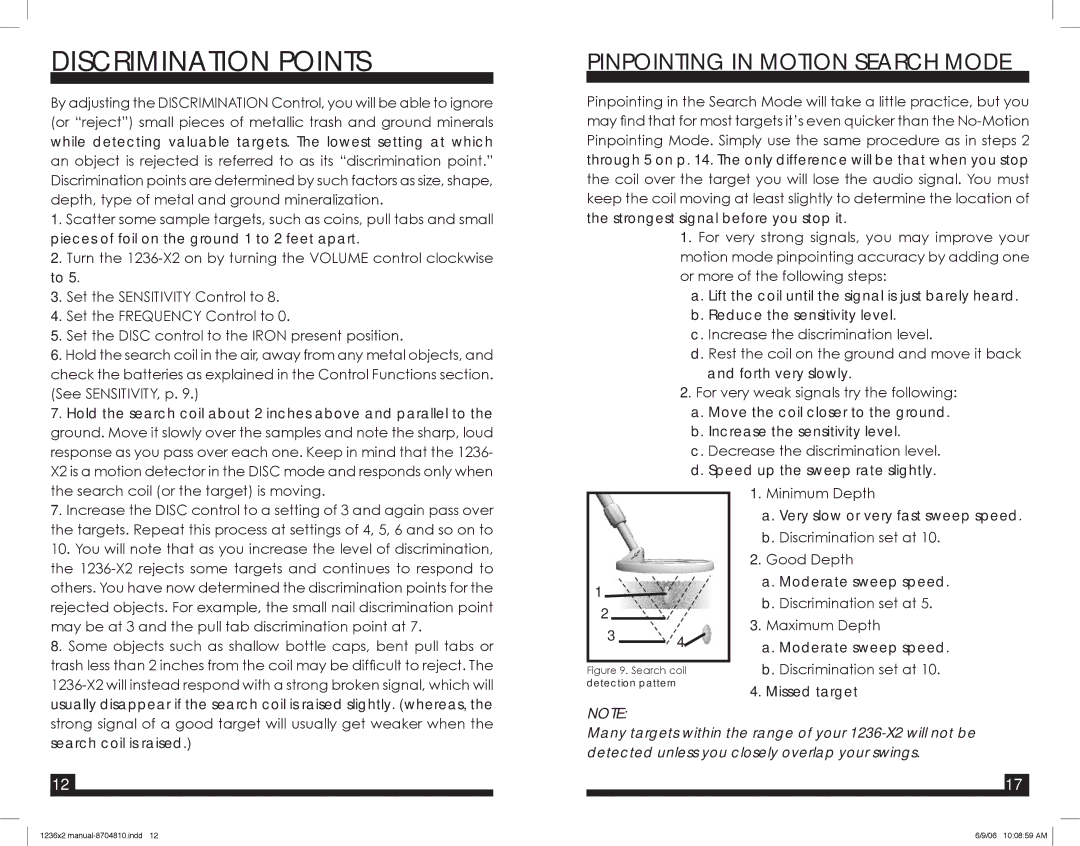1236-X2 specifications
The Fisher 1236-X2 is a versatile metal detector designed for both novice and experienced treasure hunters. Its combination of advanced technology and user-friendly features makes it a popular choice for those looking to find coins, relics, and other valuable metals. One of the standout features of the 1236-X2 is its dual-frequency operation, which allows users to detect a wider range of targets. Whether you're scouring sandy beaches or searching through heavily mineralized soil, this metal detector adjusts to varying conditions, enhancing its sensitivity to different types of metals.The Fisher 1236-X2 boasts an easy-to-read LCD display that provides essential information in real time. This screen shows the target ID, depth indication, and discrimination settings, allowing users to quickly assess whether a signal is worth investigating. The depth indicator, in particular, is a useful tool for serious treasure hunters, giving them a better understanding of how deep a target may lie beneath the surface.
Another impressive characteristic of the Fisher 1236-X2 is its lightweight design. Weighing in at just around two pounds, it is designed for comfort during long treasure-hunting outings. The detector also features adjustable sensitivity settings and a variety of discrimination modes, enabling users to filter out unwanted signals and focus on valuable targets. This level of customization ensures that each user can tailor the device to their own specific needs and preferences.
The Fisher 1236-X2 comes equipped with a durable, weather-resistant housing, making it suitable for use in various outdoor conditions. Additionally, the long battery life means that users can continue their searches without frequent interruptions. The device’s ergonomic handle promotes a natural grip, reducing fatigue during extended periods of use.
In conclusion, the Fisher 1236-X2 is a well-rounded metal detector that combines user-friendly features with advanced technology. Its dual-frequency operation, clear LCD display, lightweight design, and customizable settings make it a valuable tool for treasure hunters of all skill levels. Whether you're exploring a new site or revisiting a familiar area, the Fisher 1236-X2 is equipped to help you uncover hidden treasures.

